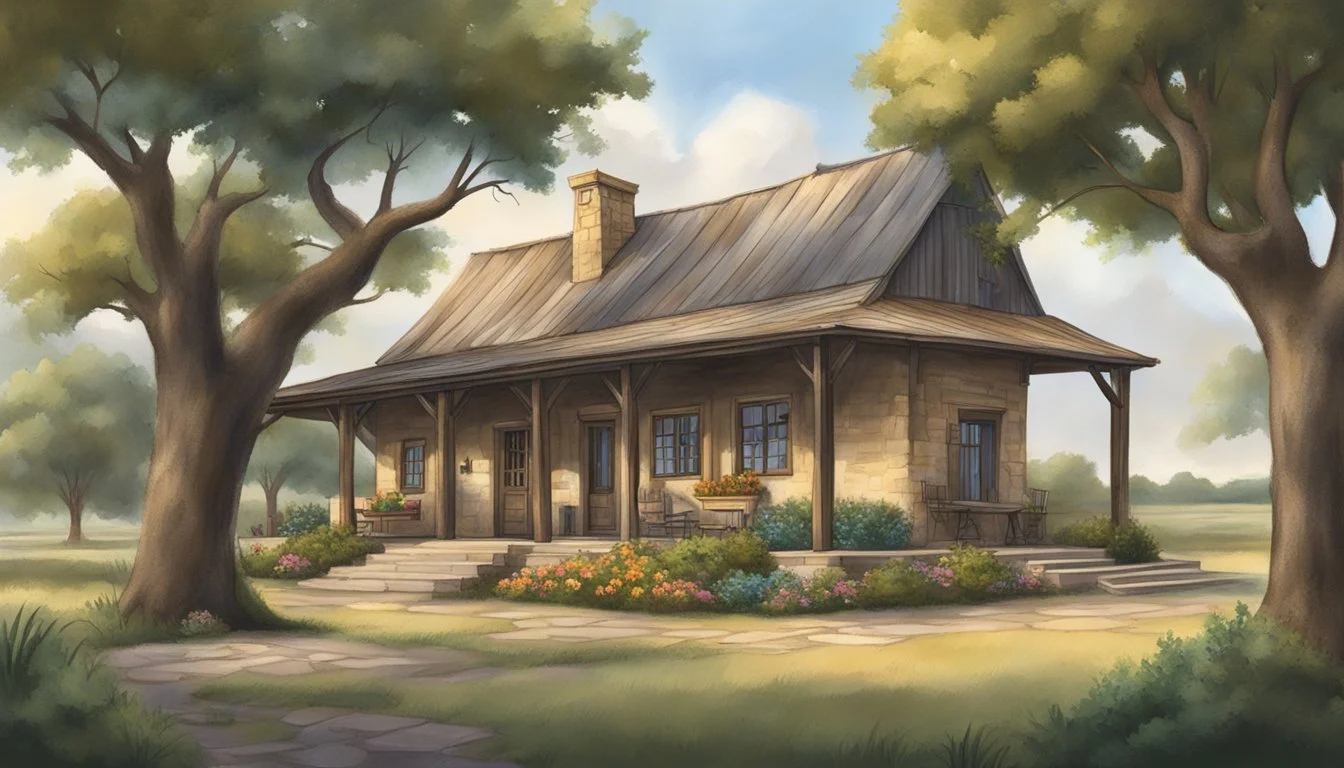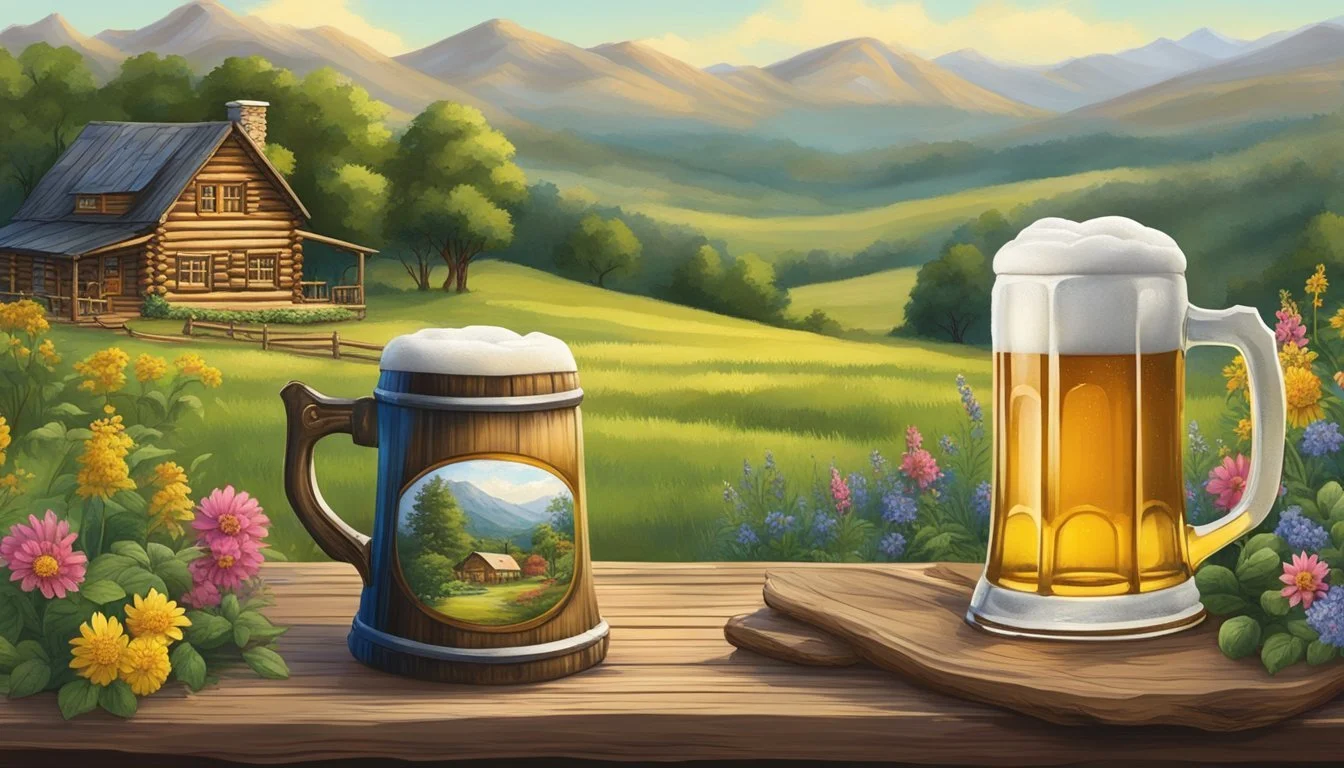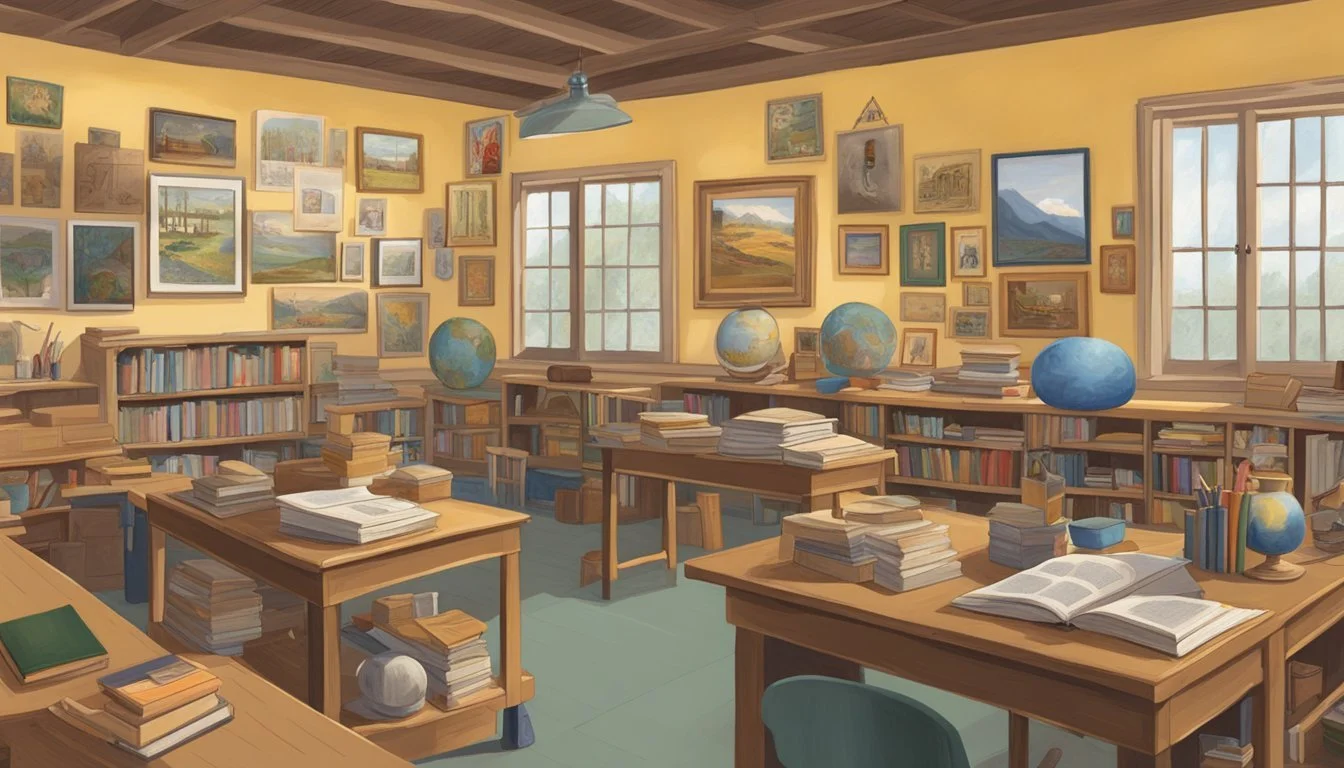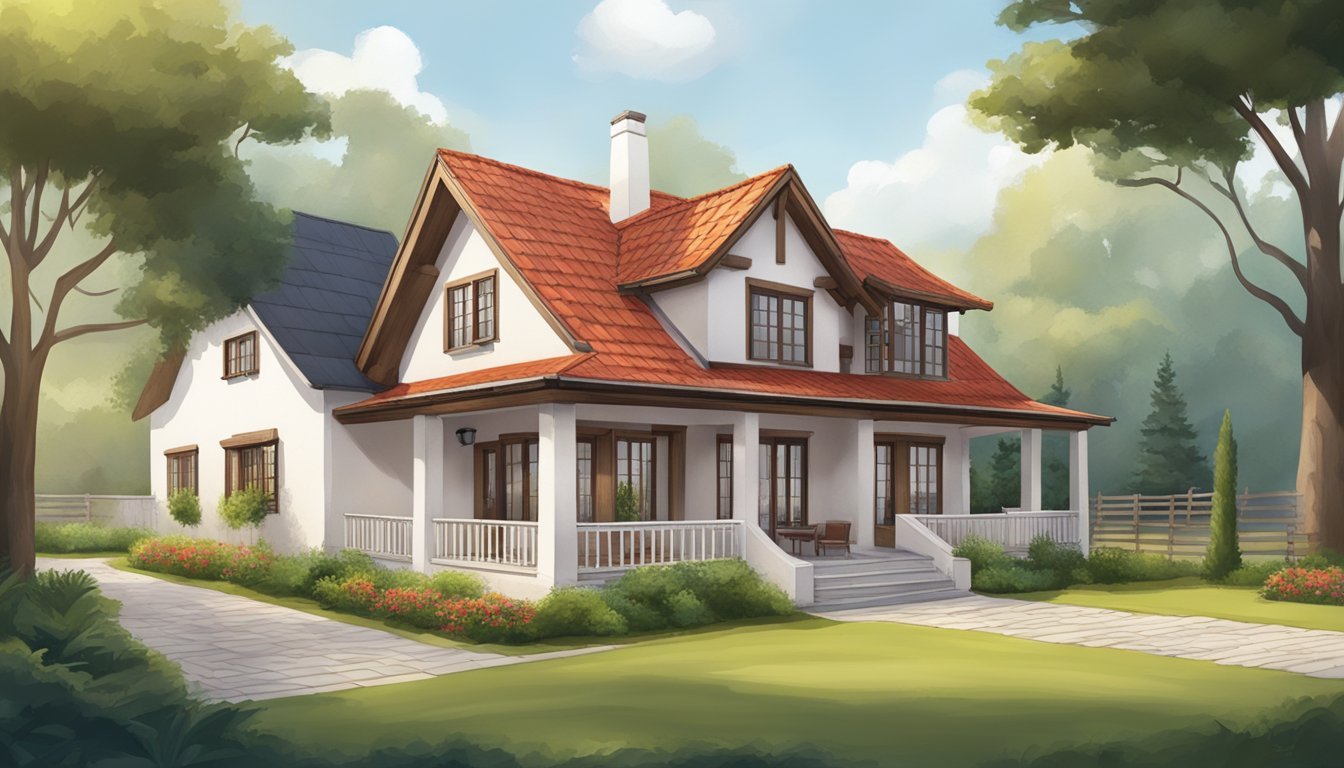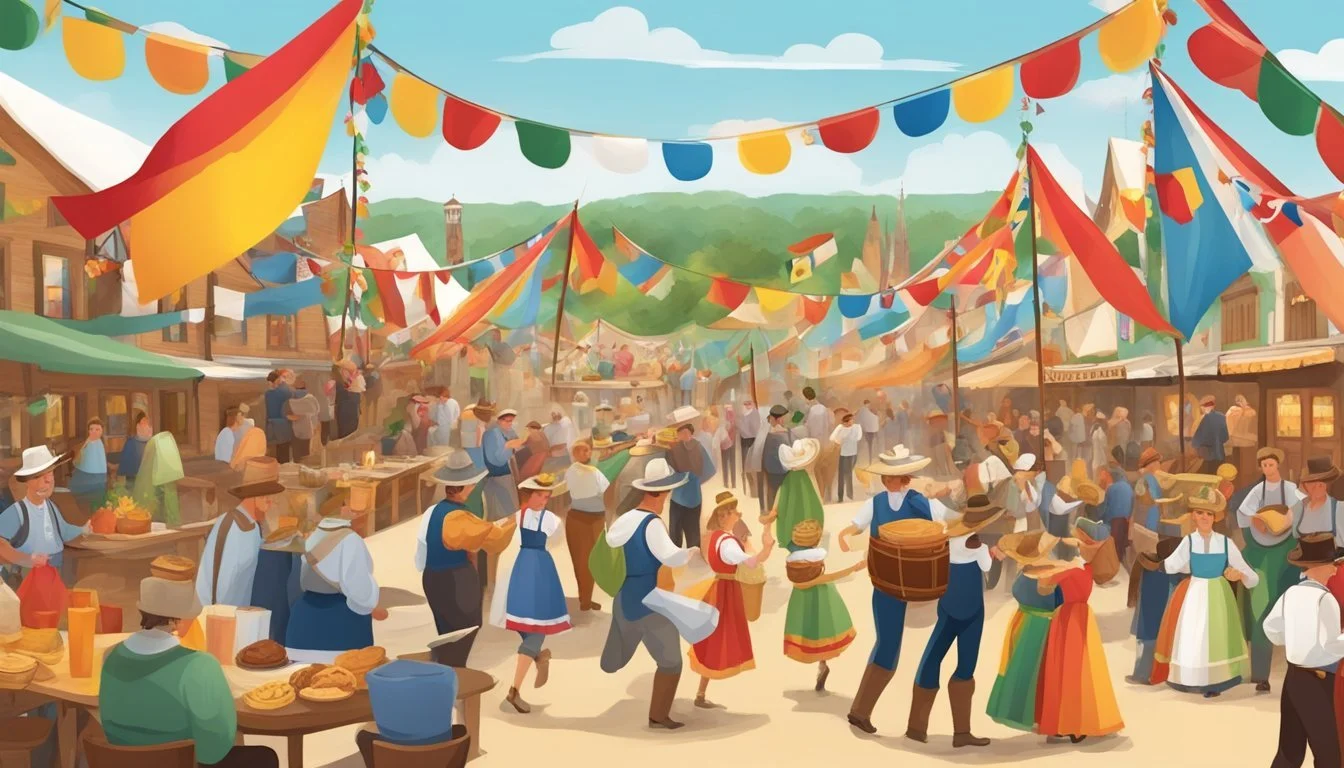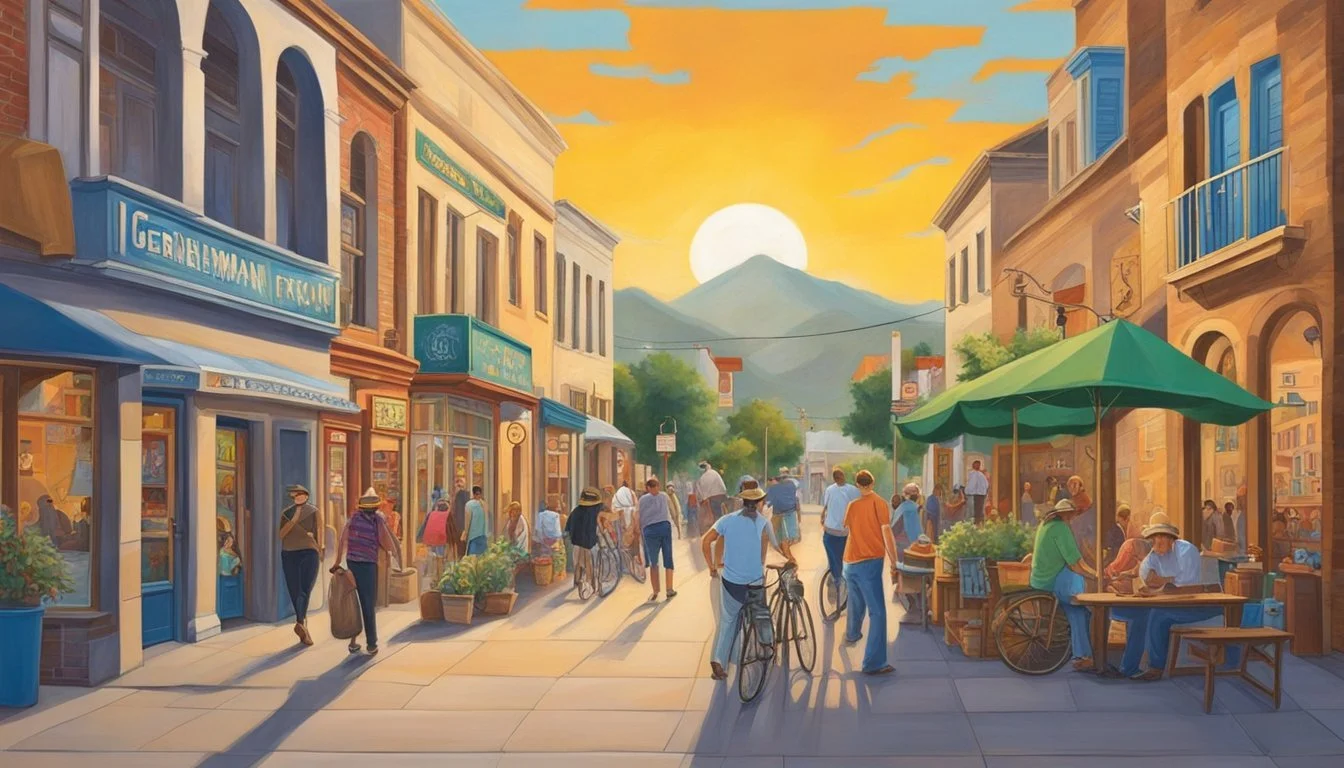German Texan Artists and Their Legacy
Cultural Impact and Enduring Influence
The influence of German Texans on the state's cultural landscape extends into the realm of visual arts, leaving an enduring legacy that is both distinct and integral to the broader tapestry of Texas history. German immigrants began arriving in Texas during the 19th century, bringing a rich artistic heritage that melded with the local customs to create a unique blend of styles. These artists, often carrying the techniques and sensibilities of their homeland, imbued their works with a sense of nostalgia for the familiar landscapes of Germany while simultaneously capturing the rugged beauty of Texan scenery.
Their contributions have echoed through the generations, with some of the more notable figures achieving widespread acclaim. The works of German Texan artists often go beyond mere depiction of landscapes and scenes, embodying the cultural convergence that defines much of Texas's diverse artistic expression. Through a variety of mediums including painting, sculpture, and architecture, these artists have not only contributed significantly to the state's cultural heritage but also helped to preserve German customs and traditions.
Early Settlement and Cultural Influence
German migration to Texas in the 19th century profoundly shaped the cultural landscape of the state. The establishment of German Texan communities brought distinctive European influences to areas such as Fredericksburg and New Braunfels, leaving an indelible mark on Texas's heritage and societal development.
German Immigration to Texas
German immigration to Texas began in earnest in the early 1830s, as settlers sought opportunity and reprieve from political and religious pressures in Germany. Fleeing economic hardship and societal upheaval—such as the consequences of the Napoleonic wars—many Germans saw Texas as a land of potential. The Texas Hill Country, with its reminiscent climate and fertile land, became a magnet for these immigrants. San Antonio often served as the first stop before settlers would head into the heartland of German culture in Texas.
Key Migration Periods:
Initial Settlement: Early 1830s
Height of Immigration: 1840s to 1850s
Motivations for Immigration:
Seeking religious and political sanctuary
Economic opportunities
Desire to maintain German cultural identity
Establishment of German Texan Communities
Once in Texas, German settlers rapidly established flourishing communities. Fredericksburg and New Braunfels became strongholds of German Texan culture, with agriculture at the center of community life. Farms were established, harnessing the rich soil of the Texas Hill Country. In addition to farms, these settlers built schools, churches, and introduced German-style architecture to the region.
Cultural Contributions:
German languages and dialects were common in areas like Fredericksburg and New Braunfels.
Classical music, opera, and festivities like Oktoberfest were introduced.
Economic Contributions:
Innovations in agriculture and industry
Start of local businesses, including bakeries, breweries, and newspapers
During World War I and World War II, German Texans faced a period of stigmatization due to anti-German sentiment. Despite this, the communities maintained a strong sense of their heritage, which continues to be celebrated through various festivals, educational institutions, and preservation of historical sites. These communities not only transformed the economy of regions such as the Texas Hill Country but also contributed to the cultural diversification of the entire state.
Language and Education
The cultural legacy of German Texans is particularly evident in their efforts to preserve their language and educational traditions. Through schools and community efforts, they have managed to keep their linguistic heritage alive and shape the educational landscape in Texas.
Preservation of the German Language
In Texas, the German community has been proactive in maintaining their language. Organizations such as the German-Texas Heritage Society have been instrumental in this endeavor. They promote the use of the German language through various educational programs and cultural events, ensuring the linguistic tradition is passed down to new generations. The preservation of the German language is seen not only in formal settings like educational institutions but also in everyday life within these communities.
German Influence on Texan Schools
The impact of German settlers on Texan education is historically significant, most notably with the establishment of the German Free School. This school represented a pioneering approach to education in Texas, focusing on a bilingual curriculum that combined both English and German instruction. Through this and similar schools, the German influence extended beyond language to encompass a broad educational philosophy including a diverse set of courses ranging from the arts to the sciences.
Artistic Expression
German Texan artists have left a significant mark on cultural expression in Texas through both visual and performing arts. This rich legacy is evident in the enduring murals and paintings that grace public and private spaces, as well as in the vibrant music and dance traditions that continue to be celebrated in communities throughout the state.
Visual Arts: Painters and Murals
German Texan painters have contributed greatly to the state's visual arts landscape, creating murals that depict significant historical events and everyday life. Their craftsmanship is visible across various towns, bringing to life the walls of buildings with scenes that capture the essence of the region's culture and heritage.
Murals have served not only as a form of beautification but also as a storytelling medium, often reflecting the fusion of German and Texan influences.
Individual artists have garnered recognition for their unique styles and contributions to local art scenes, maintaining folk traditions while also exploring new artistic directions.
Music and Dance Traditions
German Texans have also played an integral role in shaping the region's auditory and performance arts.
Polka Music: This genre, characterized by its lively tempo and distinctive use of the accordion, remains a cornerstone of German Texan musical heritage. Local bands and solo artists continue to perform polka, often at community festivals and events.
Instrumental to this genre, the accordion is both a symbol and a fundamental component in delivering the upbeat melodies synonymous with polka music.
Dance: Traditional German dance forms, such as waltzes and polkas, have been preserved and are still taught and performed today, reflecting the enduring nature of these cultural practices.
Craftsmanship is also evident in the detailed and elaborate dance attire that accompanies these performances, showcasing a fusion of German precision with Texan flair.
Architecture and Material Culture
German Texan artists significantly influenced the architectural landscape and material culture of Texas, merging European styles with local needs to create structures that were both practical and aesthetically distinctive.
Residential and Civic Building Styles
German immigrants in Texas often utilized Fachwerk or half-timbered construction techniques, a hallmark of traditional German architecture. This method involves creating a skeleton of timber with the spaces in between filled with bricks or stones. In Texas, they adapted to local materials, and houses displayed the distinctive geometric patterns of the timber framing. Civic buildings, such as banks and stores, followed similar stylings with robust, ornate facades. Many of these structures also featured distinct signs that combined German script and iconography, reflecting their heritage.
Farmhouses and Rural Structures
Rural German Texans built farmhouses and outbuildings that reflected their culture and the practicalities of life on the Texas frontier. These structures were often constructed with simplicity in mind, yet with a strong sense of durability and protection against the elements. Materials were sourced locally, leading to a variety of styles that nevertheless carried a distinctly German influence. Artifacts from this time, which range from tools to domestic items, showcase the import of material culture in understanding the everyday life of German Texans and their ability to synthesize new environments with traditional practices.
Cultural Heritage and Festivities
German Texan artists have played a significant role in maintaining and celebrating the state's vibrant cultural heritage, with a variety of festivities and museums dedicated to preserving these traditions.
Annual Celebrations and Events
German heritage in Texas is celebrated through a myriad of annual events that showcase traditional food, music, and customs. Oktoberfest is an iconic event, held in various Texan towns, that reflects the state's rich German influences. Visitors can enjoy the festive atmosphere complete with beer, authentic German cuisine (What Wine Pairs Perfectly With German Cuisine), and lively music. Another notable event is Wurstfest, a unique festival in New Braunfels, where sausage and other staple German foods like schnitzel take center stage, coupled with German folk music and dance.
Maifest, similar to the German tradition of May Day, is another annual celebration that highlights German heritage through traditional dance, music, and bluebonnet flowers symbolizing spring's arrival. These events not only preserve German culture but also foster a sense of community and provide a platform for artists to display their work.
Annual German Texan Festivals:
Oktoberfest: Beer, cuisine, and music
Wurstfest: A celebration of sausage and German food
Maifest: Spring festival with traditional dance and music
Preserving German Texan Heritage through Museums
Museums are pivotal in chronicling the legacy of German Texans, safeguarding artifacts, and educating the public. The Pioneer Museum located in Fredericksburg, and the Sophienburg Museum in New Braunfels, are cultural strongholds that offer visitors a glimpse into the lives of German immigrants through historical exhibits and events.
These institutions serve as guardians of German Texan heritage, displaying an array of historical items and providing interactive experiences. For example, at the Pioneer Museum, one can explore the development of German settlements, while the Sophienburg Museum offers insights into how these communities have shaped New Braunfels’ identity.
Key Museums Showcasing German Texan Heritage:
Pioneer Museum: Pioneer settlements and legacy
Sophienburg Museum: The nexus of New Braunfels' German community
Influence on Texan Society and Economy
German Texans have left a significant mark on both the society and economy of Texas. Their influence spans across various industries and cultural adaptations, deeply embedding their heritage within Texan culture.
Contribution to Local Industries
German immigrants played a pivotal role in the development of Texas's economy. In the agricultural sector, they introduced innovative farming techniques and machinery, including the cotton gin, which revolutionized cotton processing. This advancement significantly boosted the textile industry in Texas. The Germans also vastly improved livestock breeding practices, contributing to a flourishing cattle trade.
Agriculture: Implemented advanced farming techniques.
Industry: Transformation of the cotton industry with machinery innovations.
Their entrepreneurial spirit didn't stop at agriculture; they ventured into other industries as well. German settlers established breweries and biergartens, influencing the local economy and introducing a part of their cultural heritage to Texas.
Integration and Adaptation in Texan Culture
The German influence seamlessly integrated into Texan culture over time. They adapted to the local customs while maintaining their unique identity, showcasing a blend of Texan and German lifestyles. They fostered a diverse cultural landscape, bringing classical and opera music into earlier Texan society.
Cultural Integration: Maintained their heritage while embracing Texan traditions.
Language and Music: Presence of German language and introduction of European classical music.
Not only did they contribute economically, but they also left an indelible cultural footprint. Their legacy continues to be celebrated in Texas through various festivals and events, reinforcing the strong ties between German heritage and Texan culture.
Historical Markers and Tourism
The German influence in Texas extends beyond traditions to a landscape dotted with historical markers and tourist-attracting sites.
Significant German Texan Sites
German Texans have left their mark through various historical landmarks that speak to both their cultural impact and everyday life. The Gruene Historic District, a gem within the Hill Country, is a prime example. Listed on the National Register of Historic Places, Gruene offers a glimpse into the past with its well-preserved architecture and decor. Another notable figure, John O. Meusebach, who was a German colonizer, has left a lasting legacy that can be appreciated through landmarks and records of his treaty with the Comanche tribe. Prince Carl of Solms-Braunfels played a vital role in establishing New Braunfels, which today flaunts its German heritage along Main Street with much vigor.
Tourists can follow the footsteps of these pivotal individuals and visit areas where German Texans have had a profound impact. The availability of organized mobile tours facilitates exploration of these sites, encompassing a blend of images, videos, interviews, and visitor information to enrich the experience.
Attracting Tourists to German Texan Heritage
Tourism thrives on the cultural experiences brought forth by the German Texan community. Periodic festivals, museums, and architecture tours allow visitors to engage actively with this unique heritage. Places like New Braunfels and Gruene not only celebrate German customs through annual festivities but also invite tourists to partake in the local way of life—whether it’s enjoying a performance in a historic theater or browsing through art galleries and craft shops that reflect German influence.
The Texas Historical Commission assists in guiding tourists to these significant areas through its resources like the Texas Time Travel website. Here, one can discover other essential sites and events, ensuring that the German Texan legacy remains vivid and accessible to all who wish to explore it.
Notable Personalities and Legacies
The German Texan community has been marked by the contribution of significant artists and leaders who have left a lasting impact on the Texan cultural landscape.
Influential German Texan Artists
John O. Meusebach: As a notable founder of Fredericksburg, John O. Meusebach is a prominent figure among German Texans. His legacy extends beyond community establishment, marking the cultural fusion of German and Texan elements.
Julian Onderdonk (1882-1922): Celebrated for his portrayal of Texan landscapes, Julian Onderdonk, the "Bluebonnet Painter," is recognized for his vivid depiction of the state's natural beauty through his impressionistic art style.
Artists of German descent in Texas have continuously utilized their heritage, including German dialects and symbols, which often serve as distinguishing features within their artwork, contributing to the state's diverse cultural tapestry.
Philanthropy and Community Building
Community Impact:
German Texans founded towns with robust communal structures, reflecting their values in town planning and social organizations.
These communities typically cherished music, education, and mutual support, ensuring a legacy that fostered a rich cultural milieu.
Philanthropic Contributions:
Individuals of German heritage often contributed to local development, either through direct financial support, such as donations to community projects, or by encouraging cultural and educational growth.
The intertwining of philanthropy and community building demonstrates the foundational role German Texans have played in shaping a unique cultural and social environment, one that resonates with the echoes of German immigration and identity in Texas.

